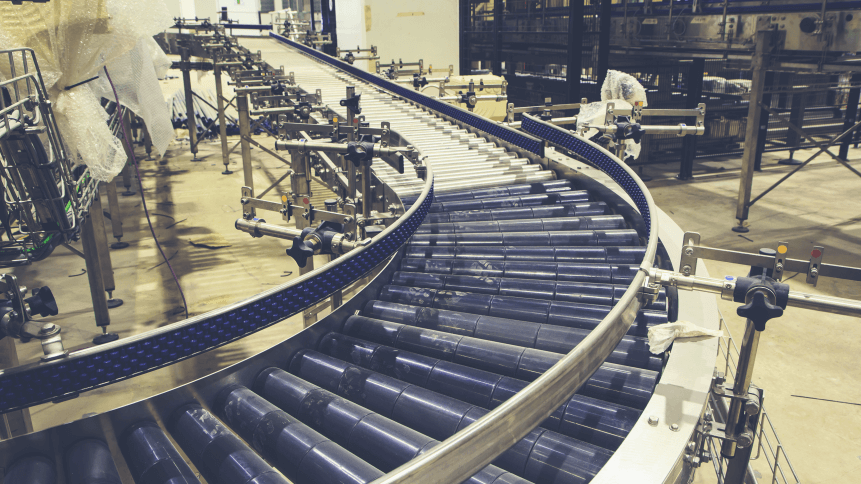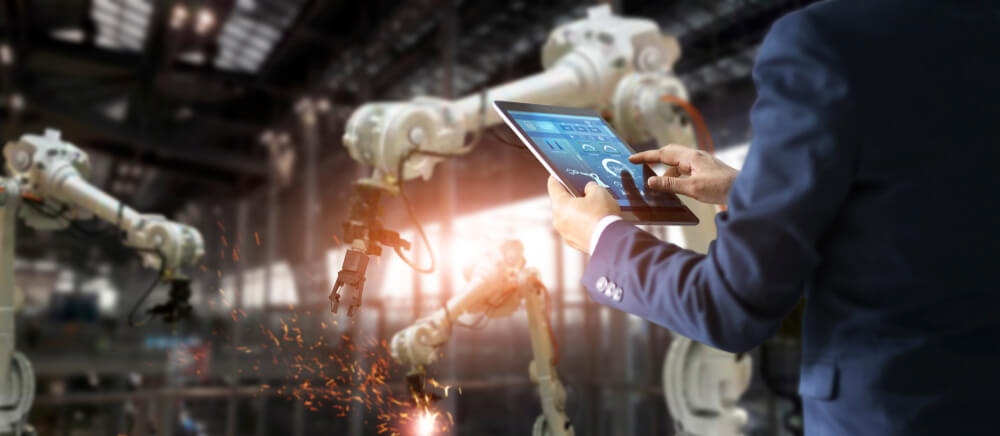
Anyone working in manufacturing will be aware of IIoT. The industry press has been talking about the technology for over a decade. In the last few years, the trickle of material on the subject has become a torrent, probably due in part to two things: firstly, the price of technology has been dropping at a rapid rate. Secondly, the consumer market in IoT (smart fridges, programmable heating/air con, even smart TVs) has led to an increased awareness of the capabilities of the technology.
But many at the sharp end of manufacturing, or indeed any ‘traditional’ industry, are not so much baffled by the technology but are uncertain as to how, or indeed, if, IIoT can be made to work for their particular facility, factory, logistics function, utility, or whatever. Part of that concern comes down to a degree of being risk-averse but, in many cases, the issue is one of the available hours in the day. The complexities of realizing an IIoT setup that will ‘wipe its feet’, or even start to provide a quick return on investment, means it’s considered a no-go.
“Eighty percent of the industrial segment believes that the IoT will be transformative and disruptive, but 90 percent feel they are unprepared for these changes,” according to Derek O’Halloran, a member of the leadership team at the World Economic Forum.

Source: Shutterstock
For many, fully scoping, deploying and managing an IIoT installation at scale is just too complex an issue to fit into an already busy schedule.
Naturally enough, the marketing literature for new plant and devices comes with lists of the virtues of each machine’s interconnectivity options and the extent of how control, monitoring and attenuation facilities are available remotely, or via a piece of software or control center. There are also plenty of third-party suppliers that are keen to install IIoT capabilities on legacy equipment or upgrade capabilities in place. And while that’s all well and good, the bigger picture needs to take in a higher number of extenuating factors. Questions needing to be solved include:
- How do new systems x and y talk to older system z?
- How do different installations at opposite ends of the country/globe talk to one another?
- If everything’s interconnected, won’t that overwhelm our network?
- We don’t have in-house data processing, nor the facilities/expertise to put it in place.
- How do we protect our data?
- Can we use IIoT data with software like ERP packages, logistics/supply chain management systems and so on?
And even after those basic questions have been addressed, there’s also a raft of details to be considered, many of which are industry-specific, others less so:
- Which data gets pushed to the cloud, which gets processed onsite (or in edge settings, as the IT industry calls it)?
- What are the best communications methods? Cellular or IP network? WiFi or Cat 5 cabling? How about fiber?
- Are there management systems that will bring every system together?
- Is there support out there that’s cost-effective, to help and advise?
On the latter count, here at TechHQ, we are happy to cover three such suppliers – see below – that can help any industrial company with the intricacies of IIoT deployment, and will ensure that there is a significant ROI. Because the benefits of ROI mean that investing now in IIoT will likely achieve payback and advantage over competitors. Figures from the World Economic Forum put the boost to industry worldwide by IIoT to amount to £14.2 trillion by 2030. Getting a slice of the action means capitalizing on the gains on offer, which may include (but are certainly not limited to) the following:
- Predictive and proactive maintenance of machinery.
- Oversight of the entirety of operations, producing a coherent, structured approach to your processes.
- Identification of problem areas, often ahead of the time when a critical situation might develop.
- Integration with other systems that feed into and out of facilities: supply chain, logistics, warehousing, stock control and so on.
- Better and safer working conditions for staff.
- Potential for increased plant and machinery lifespans.
Finally, for companies that can, or might in time, make a transition to a new revenue stream, there’s a great deal of possibility in shifting some services or offerings to one that’s OPEX based for your customers. Pay-as-you-go leasing or rental models are very attractive ways to pay for services; the rise of pay-as-you-go cloud-based services in IT has proven that very significantly over the last half dozen years. Providing power units on a per-unit pricing basis, or water filtration facility on a per-unit cost basis are increasingly viable with intelligent IIoT to help monitor, control and oversee such facilities.
The primary consideration is that for companies wishing to explore IIoT, the nature of the technology is that an all-or-nothing approach simply isn’t a must. All the companies we feature here would, in fact, advise that in most cases a slower, more considered approach is advantageous. Testing the waters of IIoT might not only show you some of the possibilities for the future of the business but also help sell the concept upstream: there’s little more convincing than a sudden improvement in the balance sheet.
The IoT solutions company Sierra Wireless has a proven track record right across industry, and its solutions are very specifically designed for industrial deployment, at scale. Offerings are not an existing IoT technology ported and ‘ruggedized’; instead its design ethos comes from 25+ years experience in the types of settings that its customers work in.
Sierra Wireless’s Octave platform is suited specifically for industrial use and is deployable by existing personnel whose primary job description does not include high-end technology. But that’s not to say Octave is a low-end platform. The platform bridges OT and IT data from new plant, legacy equipment and third-party solutions and allows onsite or external data processing of the information pulled together by the various industrial IoT sensors and controllers.
It can intelligently determine which information needs passing where and at what tolerances: for instance, the platform can be set up to only alert personnel offsite in the case of various criteria being met.
The platform is ideal for a scaled roll-out of IIoT, so companies can start small, test and then expand their technological base as required. But because of Sierra’s background in industry, ROI becomes quickly apparent, and the company’s consultants, broad portfolio of products and supporting knowledge are market-leading in the industrial sector. Read more here.
Moxa’s data acquisition, processing and communications equipment, and software are designed specifically for industrial settings and support legacy systems, new platforms and equipment coming online. The solutions provide seamless integration of IT and OT, in deployments of any scale of IIoT in even the most inhospitable environments such as heavy industry, mining and quarrying, utilities and remote outstations.
The company knows that IIoT depends on data integrity, normalization, protection and intelligent interchange. Moxa’s gateway solution is ready to go out of the box and can acquire and parse device protocols standard in OT (Modbus and MQTT, for example), plus it provides several APIs for secure development of bespoke solutions for aging plant, or integration with other systems, like HR.
As companies’ networks feel the burden of massive data flows from connected machinery, equipment, sensors and attenuation systems, information processing intelligently at the edge (or onsite) requires a specialist provider. Moxa has many years’ experience ready to deploy for its customers.
Additionally, for SME, it offers a ‘Starter Kit’, which can be used to begin the process towards industrial digitization via IIoT, or as a proof of concept to help sell IIoT up to the company’s decision-makers. Moxa will create partnerships with companies like yours, so it can provide efficient technologies as well as devices on tap.
Schneider Electric’s product range covers a range of smart and connected products, edge control systems and analytic solutions, from discrete machines that are pinging data remotely, to separate manufacturing plant and machinery sensors.
The company’s industry-related business is valued at around €5.7 billion, specializing in discrete process management and process automation. It contributes 22 percent of Schneider Electric’s overall revenues, so it is vital to the company overall. The company’s EcoStruxure framework offers an open Internet of Things (IoT) framework that delivers more reliable, sustainable and efficient results.
By using the EcoStruxure platform, IoT deployments can help automate industry and infrastructure, machine manufacturers and process operators alike. It operates over the full value chain, from the power grid to buildings, to the data center and down to the individual plant and machinery. It acts on three levels to deliver benefit.
- Connected products
IoT products which measure, monitor and control and tweak performance.
- Edge control
Systems include power and process automation, site-specific software applications and automation systems.
- Apps, analytics and services
Enterprise-level applications, typically cloud-based, which are used to deliver value.
The open nature of EcoStruxure allows partners to develop specific configurations for bespoke installations. It’s estimated that there are around 4,000 industrial application companies and approximately 160,000 developers using the EcoStruxure platform at present.
*Some of the companies featured are commercial partners of TechHQ








